WEEK 10
Posted: Wed Jun 17, 2015 6:18 am
LESSON 32
SPECIFIC TOPIC : Materials Required For Information Technology
REFERENCE BK : - Integrated Science [Made Easy] For Nigerian Junior Secondary School- Book Three By F.I Kehinde.
PERFORMANCE OBJECTIVE: At the end of the lesson the students should be able to:
(1) Define the following- Transformer, Transmission line, sub- station, Transmission etc
(2) List the materials required for technology
CONTENT:
MATERIALS REQUIRED FOR INFORMATION TECHNOLOGY
CONTROL PANEL OF THE GENERATOR- This allows the various outputs from the generator to be connected and send into a step-up transformer which magnifies the initial voltage of about 25KV.
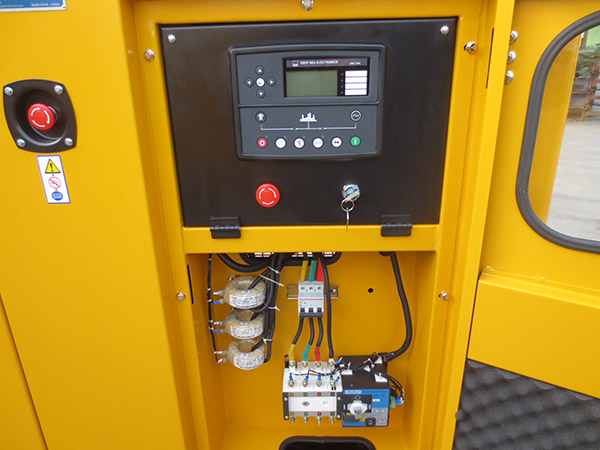
https://youtu.be/ZhHmDRSKgvI
ELECTRIC POWER SYSTEM
Electricity is generated when a loop of conducting wire rotates in a magnetic field. In a hydroelectric plant, water falling over a dam turns turbines that spin the generators that produce electricity. The electricity flows to a transmission station where a transformer changes a large current and low voltage into a small current and high voltage. Then the electricity flows over high voltage transmission lines to a series of transmission stations where the voltage is stepped down by transformers to levels appropriate for distribution to customers. Primary lines may transmit electricity at voltages as high as 500,000 volts. Secondary lines to homes carry electricity at 240 volts or 120 volts.
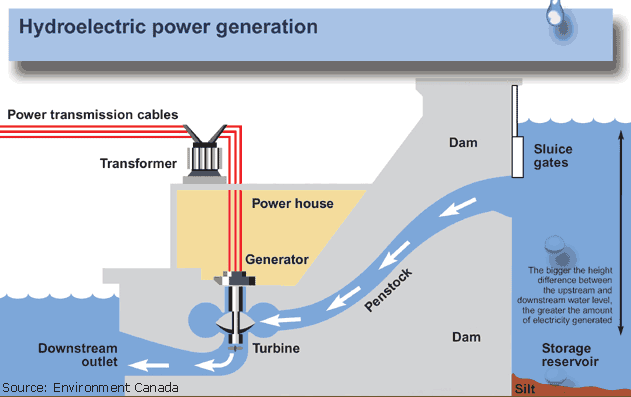
http://www.alliantenergykids.com/Energy ... ity/000416
http://kids.britannica.com/comptons/art ... ant-except
http://science.howstuffworks.com/enviro ... /power.htm
III POWER FAILURES
ELECTRIC POWER CONTROL PANEL

[1]TRANSFORMER- Transformer is an important part of the National Grid (i.e. the electricity supply in the country) which distributes electrical energy around the country.

1. Step-up transformer: the electrical energy is generated in power stations by generators at an output potential of about 25KV.
It is first stepped up to about 400KV by a transformer called step-up transformer.

2. Step-down transformer: the step-down transfer is further used to step-down the 400KV to the required suitable voltage by the various consumers e.g heavy industry, light (non - heavy) industry, town, village, farm, e.t.c

http://www.ehow.com/how_7842346_build-s ... chool.html
[2]CIRCUIT BREAKER: circuit breaker is a form of switch designed to trigger off and break the current which may flow under faulty conditions such as earth leakage or short-circuit. If such breaking of the normal current occurs, the necessary maintenance or repair is called for.
Importantly, at any point where current flows from one equipment to another ( e.g. power station or sub-station), a switch is necessary to be installed, simply for the purpose of safety.
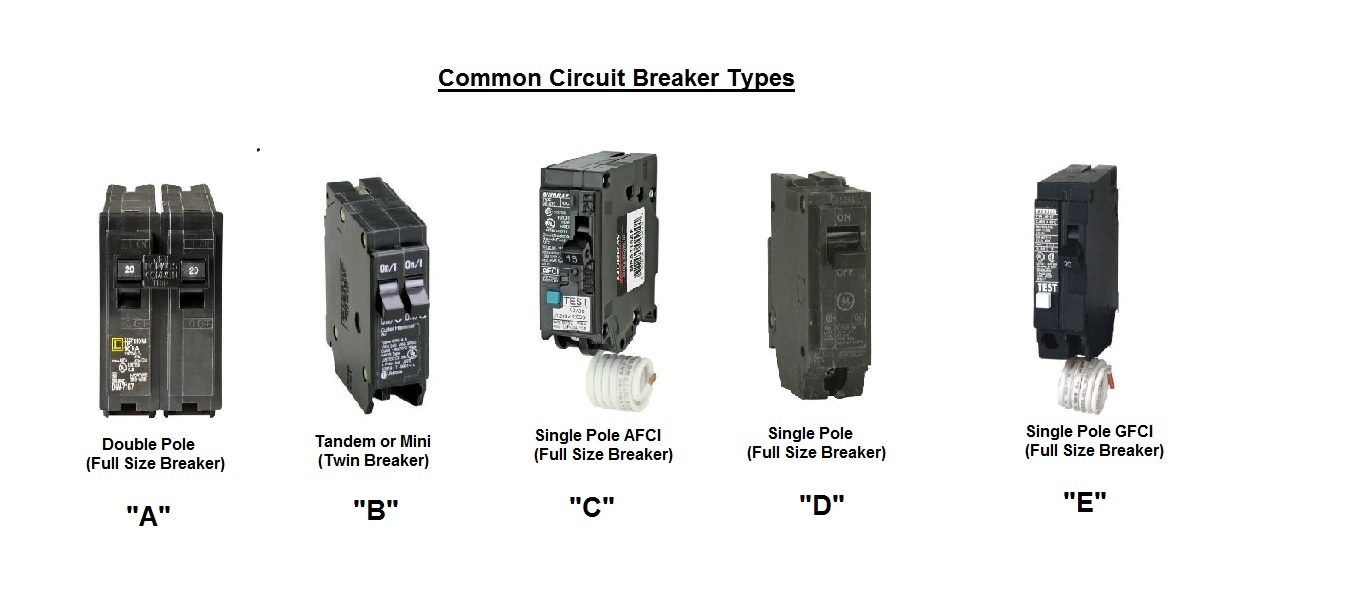
NOTE: short-circuit is the travelling of electricity along a wrong path as a result of damaged wires or wrong connections of wire.
Example: Live wire or positive terminal wrongly (accidentally) connected to Neutral wire or negative terminal.
http://www.ehow.com/list_6956177_functi ... cuit_.html
https://drive.google.com/file/d/1UIw8KJ ... sp=sharing
[3] TRANSMISSION LINE: The electrical energy from the transformer is transmitted across the country in aluminum cables (lines) roughly 2cm/20mm in diameter.

http://www.antenna-theory.com/tutorial/ ... php#txline
[4] LINE SUPPORT (HIGH POLES AND TOWERS): Line support aid transmission of electricity and prevents close contact of lines.
For instance, overhead distribution where reinforced by concrete poles or wooden poles or metal-structured poles are used for street power distribution and high metal towers for high tension power line distribution.
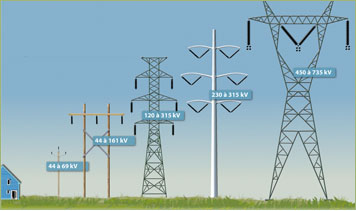
[5] SUB- STATION: in a sub-station, the current from the generator (i.e. at the generating station) is passed into the transformer (step- up transformer) through four cables. The output current, which is at high voltage from the step-up transformer, is a three-phase current and carried by three cables.

[6] TRANSMISSION- the transmission is when sound waves are transmitted by vibrating systems (i.e. system moving to and fro about a fixed position) into the space. The vibration caused the air around the system to vibrate too. The disturbed air (i.e. vibrated air) travels out as sound waves.
The production of sound waves does not involve the use of transmission lines, unlike the transmission of electricity at low frequency.
Examples: Typical examples of this transmission are Radio and television communication, Global system of Mobile communication i.e. GSM, Intercellular, etc
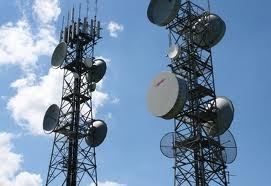
EVALUATION/CLASSWORK- List the materials required for technology
ASSIGNMENT: State the types of antennas
practice test
http://www.proprofs.com/quiz-school/sto ... fety-basic
LESSON 33
SPECIFIC TOPIC : Application of the High Frequency Transmission
REFERENCE BK : - Integrated Science [Made Easy] For Nigerian Junior Secondary School- Book Three by F.I Kehinde.
PERFORMANCE OBJECTIVE: At the end of the lesson the students should be able to:
(1) State the types of antennas
(2) State the function of an antenna
CONTENT:
APPLICATION OF THE HIGH FREQUENCY TRANSMISSION
[1] Radio communication is one of the methods of sending messages or disseminating information through sound waves.
TYPES OF ANTENNAS
[a] RECEIVING ANTENNAS- come in many different shapes, depending on the frequency and wavelength of the intended signal.
A portable FM radio uses a half-dipole antenna to receive radio signals. The other half of the dipole is attached to the radio casing and acts as a ground.

(b) VHF TELEVISION ANTENNAS- use multiple elements to receive a broader range of broadcast signals. Many TV antennas include directors and reflectors, which are extra pieces of metal that reflect and focus TV waves into the dipole elements.
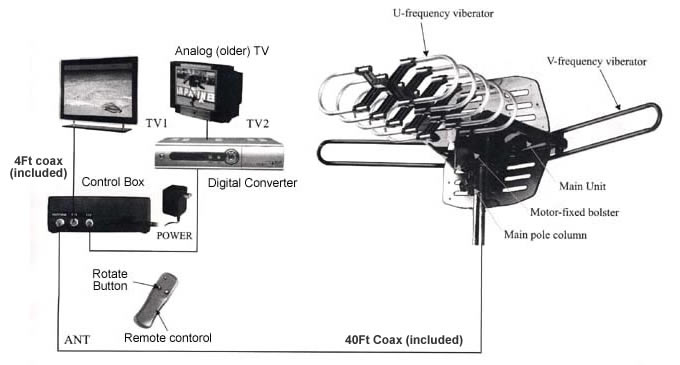
SATELLITE DISHES are also reflectors. They focus high-frequency microwaves from satellites into the receiving element mounted in front of the dish.

EVALUATION/CLASSWORK- State the types of antennas
ASSIGNMENT: State the basic elements in radio communication
further studies
https://drive.google.com/file/d/0Bz3Mh6 ... sp=sharing
http://www.antenna-theory.com/antennas/main.php
LESSON 34
MAIN TOPIC : Basic elements in Radio communication
SPECIFIC TOPIC : communication- negative and positive portrayed of relationships and sexuality
REFERENCE BK : - Integrated Science [Made Easy] For Nigerian Junior Secondary School- Book Three By F.I Kehinde.
PERFORMANCE OBJECTIVE: At the end of the lesson the students should be able to:
(3) State the basic elements in radio communication
CONTENT:
BASIC ELEMENTS IN RADIO COMMUNICATION
1. MICROPHONE: a device that converts sound energy into electrical energy thereby controlling the radio waves based on the information to be transmitted.

2. RADIO TRANSMITTER: This is equipment that generates the radio frequency waves.
The Transmitter
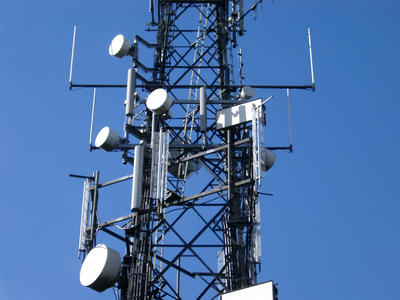
3. TELEVISION TOWER
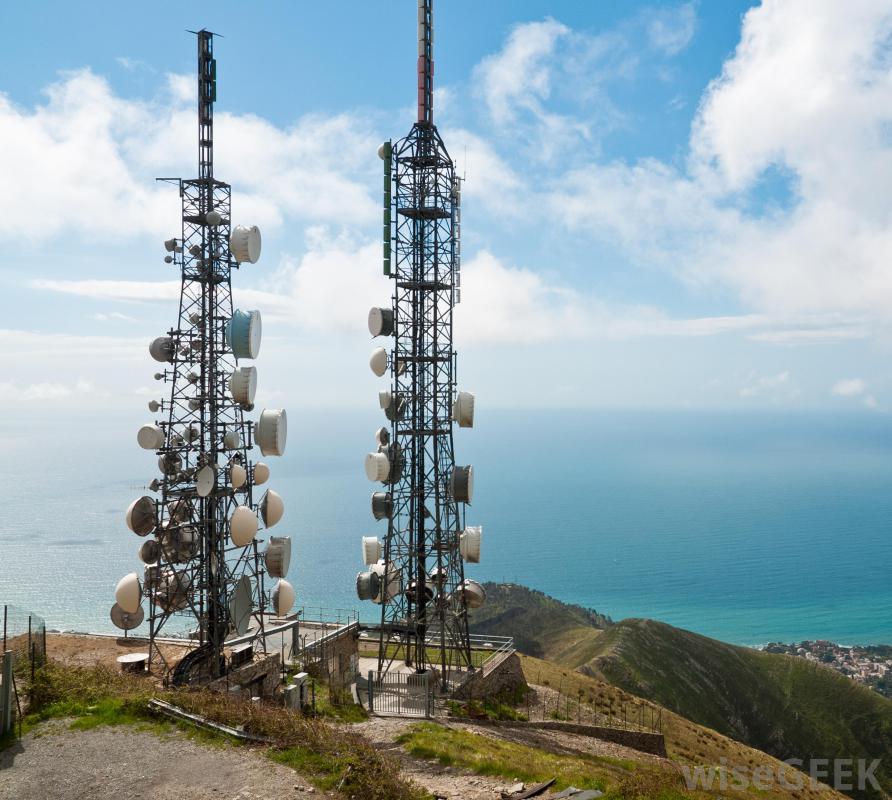
4. TRANSMITTING AERIAL: This sends and spreads out radio waves into space.
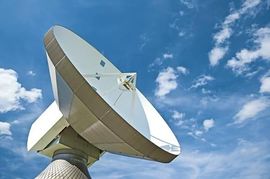
5. RECEIVING AERIAL: This comes across and receive a portion of the radio waves that is radiated into space

6. RADIO RECEIVER: This will select and amplify the signal from the transmitter. Also, it will pick out the information from the radio waves.

7. LOUDSPEAKER: This converts the electrical energy (i.e. information signal in form of electric current) into sound energy, which is the same as the original information given out.

https://youtu.be/iszFnJcNhwM
COMMUNICATIONS SATELLITE
http://visual.merriam-webster.com/commu ... cation.php
The Syncom 4 communications satellite was launched from the space shuttle Discovery. Modern communications satellites receive, amplify, and retransmit information back to earth, providing television, telefax, telephone, radio, and digital data links around the world. Syncom 4 follows a geosynchronous orbit- that is, it orbits at the same speed as the earth spins, keeping the satellite in a fixed position above earth. This type of orbit enables uninterrupted communication links between ground stations.
SATELLITE COMMUNICATIONS SERVICES -connect users directly to the telephone network from almost anywhere in the world. Special telephones are available to consumers that communicate directly with communications satellites orbiting Earth. The satellites transmit these signals to ground stations that are connected to the telephone system. These satellite services, while more expensive than cellular or other wireless services, give users access to the telephone network in areas of the world where no wired or cellular telephone service exists. Satellite phones are also able to deliver video images through videophones that use tiny cameras and transmit their images via the satellite.
III RECEIVERS
http://www.radiomilitari.com/bc1335.html
COMPONENTS IN A TRANSISTOR RADIO

http://en.wikipedia.org/wiki/File:Pocke ... nglish.jpg
EVALUATION/CLASSWORK-
view pictures below
https://drive.google.com/file/d/127lUzb ... sp=sharing
further studies
http://electronics.howstuffworks.com/sa ... radio2.htm
http://electronics.howstuffworks.com/ham-radio6.htm
http://www.nrao.edu/index.php/learn/rad ... munication
practice test
http://www.proprofs.com/quiz-school/sto ... tle=_59703
http://www.abc.net.au/science/quizzes/communications/
SPECIFIC TOPIC : Materials Required For Information Technology
REFERENCE BK : - Integrated Science [Made Easy] For Nigerian Junior Secondary School- Book Three By F.I Kehinde.
PERFORMANCE OBJECTIVE: At the end of the lesson the students should be able to:
(1) Define the following- Transformer, Transmission line, sub- station, Transmission etc
(2) List the materials required for technology
CONTENT:
MATERIALS REQUIRED FOR INFORMATION TECHNOLOGY
CONTROL PANEL OF THE GENERATOR- This allows the various outputs from the generator to be connected and send into a step-up transformer which magnifies the initial voltage of about 25KV.

https://youtu.be/ZhHmDRSKgvI
ELECTRIC POWER SYSTEM
Electricity is generated when a loop of conducting wire rotates in a magnetic field. In a hydroelectric plant, water falling over a dam turns turbines that spin the generators that produce electricity. The electricity flows to a transmission station where a transformer changes a large current and low voltage into a small current and high voltage. Then the electricity flows over high voltage transmission lines to a series of transmission stations where the voltage is stepped down by transformers to levels appropriate for distribution to customers. Primary lines may transmit electricity at voltages as high as 500,000 volts. Secondary lines to homes carry electricity at 240 volts or 120 volts.

http://www.alliantenergykids.com/Energy ... ity/000416
http://kids.britannica.com/comptons/art ... ant-except
http://science.howstuffworks.com/enviro ... /power.htm
III POWER FAILURES
ELECTRIC POWER CONTROL PANEL

[1]TRANSFORMER- Transformer is an important part of the National Grid (i.e. the electricity supply in the country) which distributes electrical energy around the country.

1. Step-up transformer: the electrical energy is generated in power stations by generators at an output potential of about 25KV.
It is first stepped up to about 400KV by a transformer called step-up transformer.

2. Step-down transformer: the step-down transfer is further used to step-down the 400KV to the required suitable voltage by the various consumers e.g heavy industry, light (non - heavy) industry, town, village, farm, e.t.c

http://www.ehow.com/how_7842346_build-s ... chool.html
[2]CIRCUIT BREAKER: circuit breaker is a form of switch designed to trigger off and break the current which may flow under faulty conditions such as earth leakage or short-circuit. If such breaking of the normal current occurs, the necessary maintenance or repair is called for.
Importantly, at any point where current flows from one equipment to another ( e.g. power station or sub-station), a switch is necessary to be installed, simply for the purpose of safety.

NOTE: short-circuit is the travelling of electricity along a wrong path as a result of damaged wires or wrong connections of wire.
Example: Live wire or positive terminal wrongly (accidentally) connected to Neutral wire or negative terminal.
http://www.ehow.com/list_6956177_functi ... cuit_.html
https://drive.google.com/file/d/1UIw8KJ ... sp=sharing
[3] TRANSMISSION LINE: The electrical energy from the transformer is transmitted across the country in aluminum cables (lines) roughly 2cm/20mm in diameter.

http://www.antenna-theory.com/tutorial/ ... php#txline
[4] LINE SUPPORT (HIGH POLES AND TOWERS): Line support aid transmission of electricity and prevents close contact of lines.
For instance, overhead distribution where reinforced by concrete poles or wooden poles or metal-structured poles are used for street power distribution and high metal towers for high tension power line distribution.

[5] SUB- STATION: in a sub-station, the current from the generator (i.e. at the generating station) is passed into the transformer (step- up transformer) through four cables. The output current, which is at high voltage from the step-up transformer, is a three-phase current and carried by three cables.

[6] TRANSMISSION- the transmission is when sound waves are transmitted by vibrating systems (i.e. system moving to and fro about a fixed position) into the space. The vibration caused the air around the system to vibrate too. The disturbed air (i.e. vibrated air) travels out as sound waves.
The production of sound waves does not involve the use of transmission lines, unlike the transmission of electricity at low frequency.
Examples: Typical examples of this transmission are Radio and television communication, Global system of Mobile communication i.e. GSM, Intercellular, etc

EVALUATION/CLASSWORK- List the materials required for technology
ASSIGNMENT: State the types of antennas
practice test
http://www.proprofs.com/quiz-school/sto ... fety-basic
LESSON 33
SPECIFIC TOPIC : Application of the High Frequency Transmission
REFERENCE BK : - Integrated Science [Made Easy] For Nigerian Junior Secondary School- Book Three by F.I Kehinde.
PERFORMANCE OBJECTIVE: At the end of the lesson the students should be able to:
(1) State the types of antennas
(2) State the function of an antenna
CONTENT:
APPLICATION OF THE HIGH FREQUENCY TRANSMISSION
[1] Radio communication is one of the methods of sending messages or disseminating information through sound waves.
TYPES OF ANTENNAS
[a] RECEIVING ANTENNAS- come in many different shapes, depending on the frequency and wavelength of the intended signal.
A portable FM radio uses a half-dipole antenna to receive radio signals. The other half of the dipole is attached to the radio casing and acts as a ground.

(b) VHF TELEVISION ANTENNAS- use multiple elements to receive a broader range of broadcast signals. Many TV antennas include directors and reflectors, which are extra pieces of metal that reflect and focus TV waves into the dipole elements.

SATELLITE DISHES are also reflectors. They focus high-frequency microwaves from satellites into the receiving element mounted in front of the dish.

EVALUATION/CLASSWORK- State the types of antennas
ASSIGNMENT: State the basic elements in radio communication
further studies
https://drive.google.com/file/d/0Bz3Mh6 ... sp=sharing
http://www.antenna-theory.com/antennas/main.php
LESSON 34
MAIN TOPIC : Basic elements in Radio communication
SPECIFIC TOPIC : communication- negative and positive portrayed of relationships and sexuality
REFERENCE BK : - Integrated Science [Made Easy] For Nigerian Junior Secondary School- Book Three By F.I Kehinde.
PERFORMANCE OBJECTIVE: At the end of the lesson the students should be able to:
(3) State the basic elements in radio communication
CONTENT:
BASIC ELEMENTS IN RADIO COMMUNICATION
1. MICROPHONE: a device that converts sound energy into electrical energy thereby controlling the radio waves based on the information to be transmitted.

2. RADIO TRANSMITTER: This is equipment that generates the radio frequency waves.
The Transmitter

3. TELEVISION TOWER

4. TRANSMITTING AERIAL: This sends and spreads out radio waves into space.

5. RECEIVING AERIAL: This comes across and receive a portion of the radio waves that is radiated into space

6. RADIO RECEIVER: This will select and amplify the signal from the transmitter. Also, it will pick out the information from the radio waves.

7. LOUDSPEAKER: This converts the electrical energy (i.e. information signal in form of electric current) into sound energy, which is the same as the original information given out.

https://youtu.be/iszFnJcNhwM
COMMUNICATIONS SATELLITE
http://visual.merriam-webster.com/commu ... cation.php
The Syncom 4 communications satellite was launched from the space shuttle Discovery. Modern communications satellites receive, amplify, and retransmit information back to earth, providing television, telefax, telephone, radio, and digital data links around the world. Syncom 4 follows a geosynchronous orbit- that is, it orbits at the same speed as the earth spins, keeping the satellite in a fixed position above earth. This type of orbit enables uninterrupted communication links between ground stations.
SATELLITE COMMUNICATIONS SERVICES -connect users directly to the telephone network from almost anywhere in the world. Special telephones are available to consumers that communicate directly with communications satellites orbiting Earth. The satellites transmit these signals to ground stations that are connected to the telephone system. These satellite services, while more expensive than cellular or other wireless services, give users access to the telephone network in areas of the world where no wired or cellular telephone service exists. Satellite phones are also able to deliver video images through videophones that use tiny cameras and transmit their images via the satellite.
III RECEIVERS
http://www.radiomilitari.com/bc1335.html
COMPONENTS IN A TRANSISTOR RADIO

http://en.wikipedia.org/wiki/File:Pocke ... nglish.jpg
EVALUATION/CLASSWORK-
view pictures below
https://drive.google.com/file/d/127lUzb ... sp=sharing
further studies
http://electronics.howstuffworks.com/sa ... radio2.htm
http://electronics.howstuffworks.com/ham-radio6.htm
http://www.nrao.edu/index.php/learn/rad ... munication
practice test
http://www.proprofs.com/quiz-school/sto ... tle=_59703
http://www.abc.net.au/science/quizzes/communications/